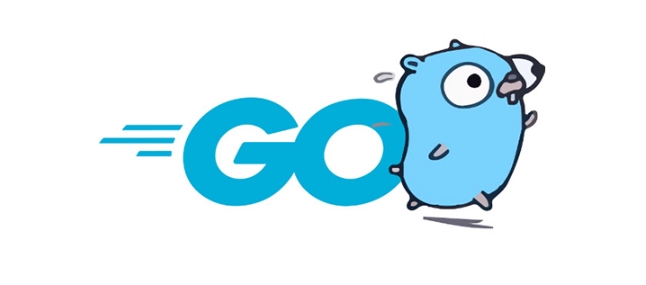The key to debugging Go code is to master the core ideas and tools. 1. Printing is the most basic and effective method. Use fmt.Println or log library to confirm the variable value and execution path. The structure can use %v to output details and locate the process location through the hierarchical log; 2. Use the Delve debugger when encountering complex problems, which supports breakpoints, view stacks and variables. It can be operated through the command line or IDE plug-in; 3. Check goroutine and deadlock problems, use -race to detect competition, select{} blocking to observe the exit situation, and combine pprof to view the goroutine status; 4. Use pprof to analyze performance bottlenecks, import the net/http/pprof package and start the HTTP server, access the specified port to obtain CPU and memory metrics, and download the profile file to analyze time-consuming functions. Choosing the right method is the key to successful debugging.

Debugging Go code is actually not mysterious and does not necessarily require complex tools. As long as you master several core ideas and common methods, most problems can be gradually investigated.

Printing is the most basic and effective method
Many novices want to use a debugger as soon as they come up, but the most direct and effective way is to "print". Go's fmt.Println or log library (such as log ) can quickly help you confirm variable values, execution paths and other issues.
- If it is a structure or map, you can use
% vto output more detailed content - Use hierarchical logs to facilitate positioning specific locations in the process
- Don't be afraid to call the log too much, just delete it after debugging
Sometimes you don't need something too complicated, and a simple print can let you find out where the problem lies.

Use Delve for breakpoint debugging
When you encounter relatively hidden problems, such as concurrency problems and state changes are difficult to track, it is necessary to use the debugger. Delve is a officially recommended debugging tool by Go, which supports setting breakpoints, viewing call stacks, variable values, etc.
Installing Delve is simple:

go install github.com/go-delve/delve/cmd/dlv@latest
Then you can run it from the command line:
dlv debug main.go
After entering debug mode, you can use break to set breakpoints, continue to execute with continue , and use print to view variable values. If you are using VS Code or GoLand, you can also configure the debug plug-in and directly graphically operate it.
It should be noted that some environments (such as remote servers) may not support graphical interfaces, and the command line method will be more practical at this time.
Check for goroutine and deadlock issues
Although Go's concurrency model is powerful, it can also cause hidden problems, such as goroutine leakage or deadlock. This type of problem is not easy to detect by printing, but there are several tips to help you troubleshoot:
- Run the program with the
-raceflag:go run -race main.gocan detect data race problems - Add a
select{}block before the program ends to see if there is a background goroutine that has not exited - Use the pprof tool to view the number of currently active goroutines and stack information
If you find that the number of goroutines increases abnormally, it is likely that there is no correct exit. Remember to check whether the channel is closed and whether it is stuck waiting for a signal that will never come.
Make good use of pprof to analyze performance bottlenecks
Sometimes the program runs slowly and takes up high resources, but no obvious errors can be seen. At this time, you can consider using the Pprof tool that comes with Go to analyze CPU and memory usage.
The startup method is very simple. Import _ "net/http/pprof" in the code and then enable an HTTP server:
go func() {
http.ListenAndServe(":6060", nil)
}() After that, visit http://localhost:6060/debug/pprof/ to see various indicators. You can download the CPU profile file for analysis and find the most time-consuming function calls.
This trick is very useful when troubleshooting performance issues, especially when online services are delayed.
Basically that's it. There is no fixed routine for debugging, the key is to choose appropriate tools and methods based on the phenomenon.
The above is the detailed content of How to debug Go code. For more information, please follow other related articles on the PHP Chinese website!

Hot AI Tools

Undress AI Tool
Undress images for free

Undresser.AI Undress
AI-powered app for creating realistic nude photos

AI Clothes Remover
Online AI tool for removing clothes from photos.

Clothoff.io
AI clothes remover

Video Face Swap
Swap faces in any video effortlessly with our completely free AI face swap tool!

Hot Article

Hot Tools

Notepad++7.3.1
Easy-to-use and free code editor

SublimeText3 Chinese version
Chinese version, very easy to use

Zend Studio 13.0.1
Powerful PHP integrated development environment

Dreamweaver CS6
Visual web development tools

SublimeText3 Mac version
God-level code editing software (SublimeText3)

Hot Topics
 How do I call a method on a struct instance in Go?
Jun 24, 2025 pm 03:17 PM
How do I call a method on a struct instance in Go?
Jun 24, 2025 pm 03:17 PM
In Go language, calling a structure method requires first defining the structure and the method that binds the receiver, and accessing it using a point number. After defining the structure Rectangle, the method can be declared through the value receiver or the pointer receiver; 1. Use the value receiver such as func(rRectangle)Area()int and directly call it through rect.Area(); 2. If you need to modify the structure, use the pointer receiver such as func(r*Rectangle)SetWidth(...), and Go will automatically handle the conversion of pointers and values; 3. When embedding the structure, the method of embedded structure will be improved, and it can be called directly through the outer structure; 4. Go does not need to force use getter/setter,
 How do I use if statements to execute code based on conditions in Go?
Jun 23, 2025 pm 07:02 PM
How do I use if statements to execute code based on conditions in Go?
Jun 23, 2025 pm 07:02 PM
InGo,ifstatementsexecutecodebasedonconditions.1.Basicstructurerunsablockifaconditionistrue,e.g.,ifx>10{...}.2.Elseclausehandlesfalseconditions,e.g.,else{...}.3.Elseifchainsmultipleconditions,e.g.,elseifx==10{...}.4.Variableinitializationinsideif,l
 How do I use the time package to work with time and durations in Go?
Jun 23, 2025 pm 11:21 PM
How do I use the time package to work with time and durations in Go?
Jun 23, 2025 pm 11:21 PM
Go's time package provides functions for processing time and duration, including obtaining the current time, formatting date, calculating time difference, processing time zone, scheduling and sleeping operations. To get the current time, use time.Now() to get the Time structure, and you can extract specific time information through Year(), Month(), Day() and other methods; use Format("2006-01-0215:04:05") to format the time string; when calculating the time difference, use Sub() or Since() to obtain the Duration object, and then convert it into the corresponding unit through Seconds(), Minutes(), and Hours();
 How does Go support concurrency?
Jun 23, 2025 pm 12:37 PM
How does Go support concurrency?
Jun 23, 2025 pm 12:37 PM
Gohandlesconcurrencyusinggoroutinesandchannels.1.GoroutinesarelightweightfunctionsmanagedbytheGoruntime,enablingthousandstorunconcurrentlywithminimalresourceuse.2.Channelsprovidesafecommunicationbetweengoroutines,allowingvaluestobesentandreceivedinas
 How do I use the Lock() and Unlock() methods to protect a critical section of code in Go?
Jun 23, 2025 pm 08:37 PM
How do I use the Lock() and Unlock() methods to protect a critical section of code in Go?
Jun 23, 2025 pm 08:37 PM
The standard way to protect critical areas in Go is to use the Lock() and Unlock() methods of sync.Mutex. 1. Declare a mutex and use it with the data to be protected; 2. Call Lock() before entering the critical area to ensure that only one goroutine can access the shared resources; 3. Use deferUnlock() to ensure that the lock is always released to avoid deadlocks; 4. Try to shorten operations in the critical area to improve performance; 5. For scenarios where more reads and less writes, sync.RWMutex should be used, read operations through RLock()/RUnlock(), and write operations through Lock()/Unlock() to improve concurrency efficiency.
 How do I use bitwise operators in Go (&, |, ^, &, )?
Jun 23, 2025 pm 01:57 PM
How do I use bitwise operators in Go (&, |, ^, &, )?
Jun 23, 2025 pm 01:57 PM
Use bit operators to operate specific bits of integers in Go language, suitable for processing flag bits, underlying data, or optimization operations. 1. Use & (bit-wise) to check whether a specific bit is set; 2. Use
 What is the switch statement in Go, and how does it work?
Jun 23, 2025 pm 12:25 PM
What is the switch statement in Go, and how does it work?
Jun 23, 2025 pm 12:25 PM
A switch statement in Go is a control flow tool that executes different code blocks based on the value of a variable or expression. 1. Switch executes corresponding logic by matching cases, and does not support the default fall-through; 2. The conditions can be omitted and Boolean expressions are used as case judgment; 3. A case can contain multiple values, separated by commas; 4. Support type judgment (typeswitch), which is used to dynamically check the underlying types of interface variables. This makes switch easier and more efficient than long chain if-else when dealing with multi-condition branches, value grouping and type checking.
 How do I create a ticker that executes a function repeatedly at a specified interval in Go?
Jun 23, 2025 pm 05:21 PM
How do I create a ticker that executes a function repeatedly at a specified interval in Go?
Jun 23, 2025 pm 05:21 PM
Using time.NewTicker in Go can implement a time-execution function. First, create a ticker and listen to its channel, and execute the objective function when a signal is received; second, the ticker should be placed in the goroutine to avoid blocking the main thread; finally, the select and interrupt signals can be combined with elegant exit. The sample code triggers the doSomething function by listening to ticker.C for loop, and ensures resource release through deferticker.Stop(); to avoid blocking the main program, put the ticker into the startTicker function and run in the goroutine; in addition, you can also use select to listen for interrupt signals to implement the program.






